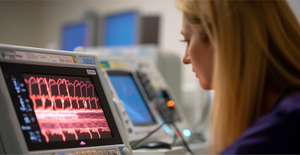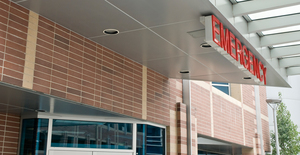10-panel Drug Testing
A 10-panel drug test detects whether you have one or more of 10 different drugs or substances in your body. An employer, a judge, or a doctor may order it. An addiction treatment center might also order it to check your recovery status.
Who should get a 10-panel drug test?
You may need a 10-panel drug test if you are asked to have this test by a new employer or by a judge conducting a court case in which you are involved, reports the National Library of Medicine (NLM). You may also need a 10-panel drug test if you play professional sports, are in a treatment program for drug and alcohol misuse, or if your doctor wants to see if you are using prescription drugs correctly.
Here are other reasons you may need a 10-panel drug test, according to the Substance Abuse and Mental Health Services Administration (SAMHSA):
- Pre-employment. A potential employer may require you to get a drug test before getting hired.
- Annual physical. Drug testing may be included as part of an annual physical exam required by some employers.
- Reasonable suspicion test. Your employer may order a 10-panel drug test if it suspects drug use is the reason you are engaging in unsafe behavior at work.
- Post-accident test. Your employer may order a 10-panel drug test if you were involved in a workplace accident and suspects it occurred due to drug or alcohol use.
- Post-treatment test. Your employer may ask you to do a drug test encouraging you to stay drug-free if you recently completed a drug or alcohol rehab program.
- Random test. You may be subject to a 10-panel drug test if your employer performs random drug testing to deter illicit drug use among its employees.
How to get a 10-panel drug test
Getting a 10-panel drug test is relatively easy. You can ask your doctor for a referral to a drug testing provider or visit a lab or walk-in clinic that offers drug testing without requiring a referral. You can also use an at-home drug testing kit, reports the NLM, which can be purchased from a local pharmacy or online retailer.
If your employer is ordering this drug test, your employer may provide you with a referral to a lab that offers this service or perform the test onsite.
If you need help finding out how to get a 10-panel drug test, use the healthcare provider directory on Solv’s website. Solv allows you to contact drug testing providers individually to learn more about their services. Solv also allows you to book a same-day or next-day appointment from its website.
Which drugs can be detected with a 10-panel drug test?
A 10-panel drug test looks for the presence of one or more of 10 different substances in your body. The exact substances detected with this drug test may vary based on the lab or provider conducting the test.
Drugs that can be detected using a 10-panel drug test, according to SAMHSA, the NLM, and Pasadena City College, include the following:
- Alcohol (ethanol)
- Amphetamines (including methamphetamine)
- Barbiturates
- Benzodiazepines
- Cocaine
- Marijuana (THC)
- MDMA
- Methadone
- Methaqualone
- Opiates (such as morphine, codeine, hydrocodone, etc.)
- Phencyclidine (PCP)
- Propoxyphene
- Steroids
Your employer, the drug testing provider, or the organization ordering the 10-panel drug test can confirm which drugs you will be screened for during this test.
What happens during a 10-panel drug test?
During your appointment for a 10-panel drug test, you will be asked to provide a sample of your urine, blood, saliva, hair, or sweat, says the NLM. The drug testing provider may be able to confirm whether you need to provide multiple samples based on the substances for which you are being screened.
The most commonly used drug tests are usually performed as urine tests, reports the NLM. During a urine test, you will be asked to urinate into a sterile cup, which the lab then evaluates. The NLM adds that in some instances, you may need to urinate in the presence of a healthcare worker who can confirm that the sample is coming from you and not being tampered with.
For a blood test, your testing provider will draw a small amount of blood from a vein in your arm using a tiny needle. You may feel a slight sting when the needle goes in and out. According to the NLM, a blood test can usually be performed in under five minutes.
Contact the drug testing provider before your appointment to confirm what kind of tests you are having and what you need to do to prepare.
What do results mean from a 10-panel drug test?
Your doctor or the drug testing provider may contact you with your 10-panel drug test results when they become available. These healthcare professionals can also help you interpret and understand your test results.
If your 10-panel drug test returns negative, then none of the ten drugs were found in your sample(s). Alternatively, a negative result could mean you had tiny traces of one or more of these substances in your system, but they were not detected or picked up by the test, says the NLM.
If your result returns positive, it means the 10-panel drug test found one or more of these substances in your system. It may also indicate you were misusing prescription drugs such as opiates or benzodiazepines, reports the NLM. If you test positive for drugs, a follow-up test may be required to rule out false-positive results and confirm that you were using drugs.
Find 10-panel Drug Testing near you
- Alabama
- Alaska
- Arizona
- Arkansas
- California
- Colorado
- Connecticut
- Delaware
- Florida
- Georgia
- Hawaii
- Idaho
- Illinois
- Indiana
- Iowa
- Kansas
- Kentucky
- Louisiana
- Maine
- Maryland
- Massachusetts
- Michigan
- Minnesota
- Mississippi
- Missouri
- Montana
- Nebraska
- Nevada
- New Hampshire
- New Jersey
- New Mexico
- New York
- North Carolina
- North Dakota
- Ohio
- Oklahoma
- Oregon
- Pennsylvania
- Rhode Island
- South Carolina
- South Dakota
- Tennessee
- Texas
- Utah
- Vermont
- Virginia
- Washington
- Washington DC
- West Virginia
- Wisconsin
- Wyoming
10-panel Drug Testing FAQs
What preparation is needed for a 10-panel drug test?
The NLM recommends avoiding foods that contain poppy seeds before your test because they could make you test positive for opiate use. It also recommends telling your drug testing provider if you are using any prescription drugs, over-the-counter medicines, or supplements, as these substances may affect your test results.
What are other names for a 10-panel drug test?
According to the NLM, other names for a 10-panel drug test are drug screen, drug of abuse testing, substance abuse testing, tox screen, or toxicology screen. Before having a drug test, ask the organization or person ordering the test about the number of drugs you’ll be tested for.
What risks are associated with taking a 10-panel drug test?
The NLM says there are no known physical risks to taking a drug test. However, it warns that if you test positive for drugs, your life may be affected in certain ways. For example, you may be at risk of losing your job or being ineligible to play sports.
When do results from 10-panel drug tests come back?
Your drug testing provider or doctor can tell you when to expect your test results. Results may come back as quickly as 24 hours or take several days or weeks, depending on factors such as lab turnaround times and your doctor’s schedule.
What happens if I test positive on a 10-panel drug test?
If you test positive on a 10-panel drug test that was ordered by your employer, you may be referred to an addiction treatment center or be subject to disciplinary action, reports SAMHSA. The consequences of testing positive on any drug test will depend on the reason you had this test.
What happens if I test positive for marijuana in a state where it is legal?
The NLM states that marijuana use remains illegal under federal law and that it’s possible to face consequences if you test positive for this drug, even if you live in a state where it’s legal. It adds that despite the legality of marijuana, some employers want to or are legally required to operate drug-free workplaces.
How soon after taking a drug will I test positive?
The U.S. Food and Drug Administration (FDA) reports that many drugs will appear on a drug test even if you took them a few hours before the test. For example, if you used methamphetamine four to six hours before your drug test, you will likely test positive.
How long do drugs stay in your system?
The FDA reports that drugs can stay in your system for several days or weeks after you use them. It adds that certain factors can affect the length of time a drug stays in your body, such as your metabolism and the amount of the drug you were using.
How much does a 10-panel drug test cost?
Contact the drug testing provider directly to confirm the cost of a 10-panel drug test, or check its website for pricing. The cost of a 10-panel drug test will be based on factors such as geographical location and whether or not the test is covered by your health insurance plan.
How can I find a 10-panel drug test provider near me?
An easy and convenient way to find a nearby 10-panel drug testing provider is to use Solv. Select “10-panel drug test” and your location from the search fields on Solv’s home page, browse the list of top-rated providers, and then make an appointment directly from the website.
Solv has strict sourcing guidelines and relies on peer-reviewed studies, academic research institutions, and medical associations. We avoid using tertiary references.
Everyday Healthcare, Simplified
Expert advice to help you live your best life

 LinkedIn
LinkedIn

